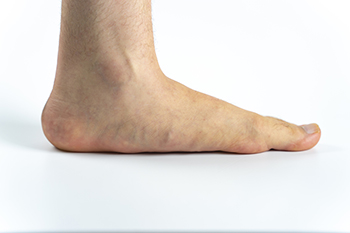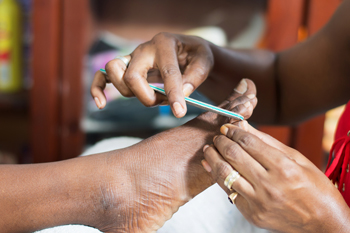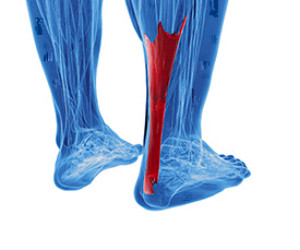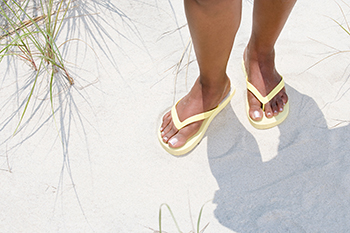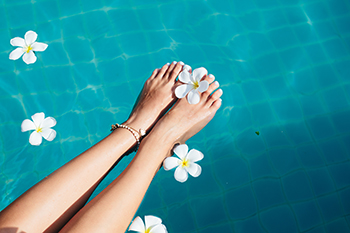
Summer brings the need for many people to wear lighter shoes. This season can provide the need to temporarily stop wearing socks, and many people opt to wear flip-flops and sandals. Practicing a good foot care routine before and during the summer months may help to eliminate conditions such as athlete’s foot from developing. It is helpful to avoid walking barefoot, in addition to wearing appropriate shoes, while in public pool swimming areas. It is also beneficial to start the day by washing and drying the feet, followed by applying a good moisturizer on them. Many people choose to buy new shoes during these months, and it is helpful to purchase them at the end of the day when the feet are at their largest. A chiropodist can help you to prevent certain foot conditions that can be easy to develop during the summer months. It is suggested that you speak with this type of medical professional who can guide you toward effective prevention methods.
Summer is the season for many foot and ankle issues. If you’re suffering from a foot or ankle problem, please consult with one of the specialists from Thornhill Foot Clinic. Our chiropodists can help you maintain the health of your lower limbs and your mobility.
Common Summer Foot Problems
Athlete’s foot
Toenail fungus
Plantar warts
Foot and ankle injuries
Bunions
Hammertoes
Heel pain
Cracked heels
Sunburns
Blisters
Prevention
Wear supportive shoes and avoid flip-flops
Maintain good foot hygiene
Exfoliate and moisturize the heels
Apply sunscreen to the feet and ankles
Wear shoes in public areas like swimming pools, locker rooms, and showers
If you have any questions, please feel free to contact our office located in . We offer the newest diagnostic and treatment technologies for all your foot care needs.



